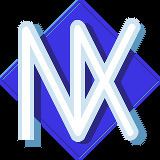Developer Gregory Nutt Working state Current | ||
 | ||
Latest release 7.19 / December 26, 2016 | ||
NuttX is a real-time operating system (RTOS) with an emphasis on standards compliance and small footprint. Scalable from 8-bit to 32-bit microcontroller environments, the primary governing standards in NuttX are POSIX and ANSI standards. Additional standard APIs from Unix and other common RTOS's (such as VxWorks) are adopted for functionality not available under these standards, or for functionality that is not appropriate for deeply embedded environments – such as fork().
Contents
- Key features
- Supported platforms
- File system
- Device drivers
- CC library
- Networking
- Flash support
- USB host support
- USB device support
- Graphics support
- Projects using NuttX
- References
NuttX was first released in 2007 by Gregory Nutt under the permissive BSD license.
Key features
Supported platforms
File system
Device drivers
C/C++ library
Networking
Flash support
USB host support
USB device support
Graphics support
Projects using NuttX
References
NuttX Wikipedia(Text) CC BY-SA
